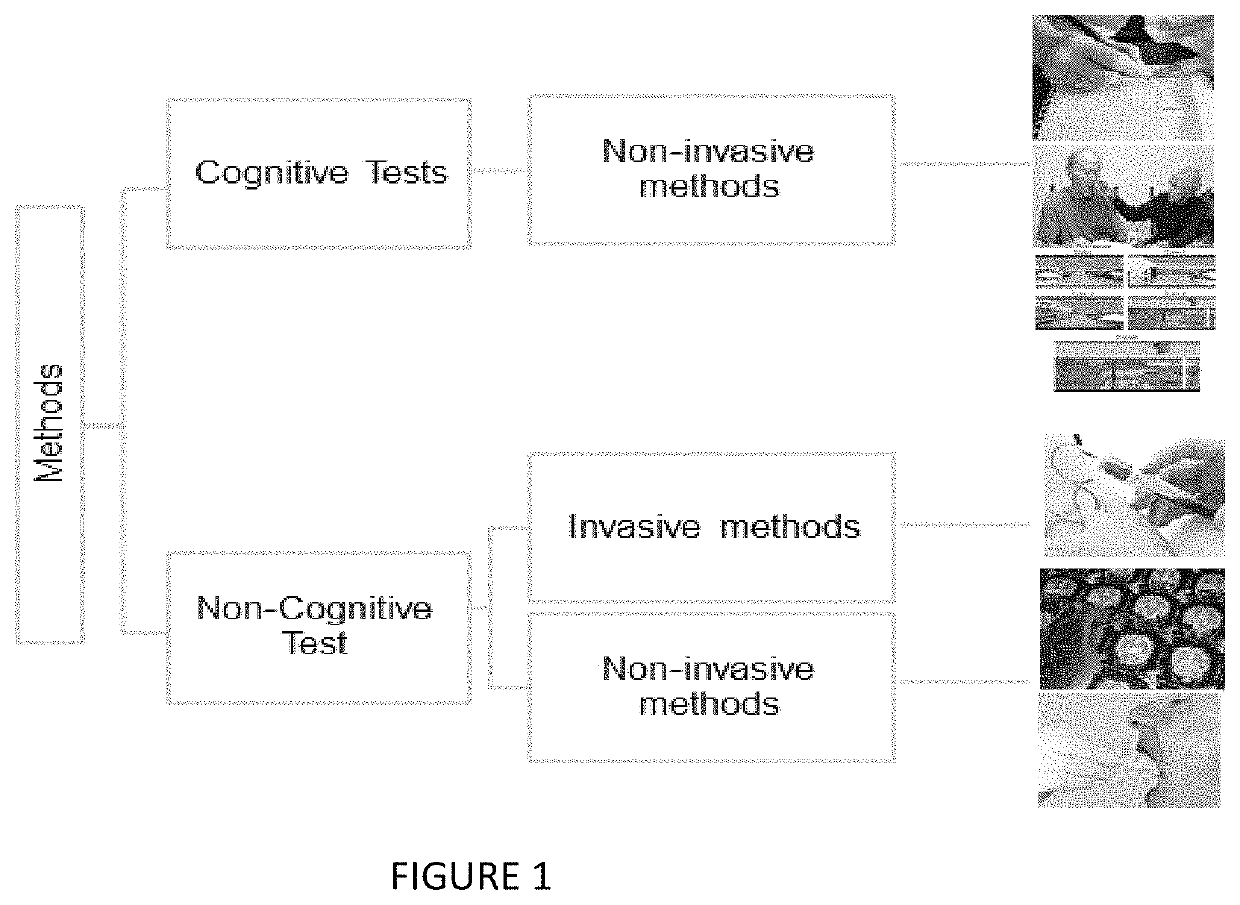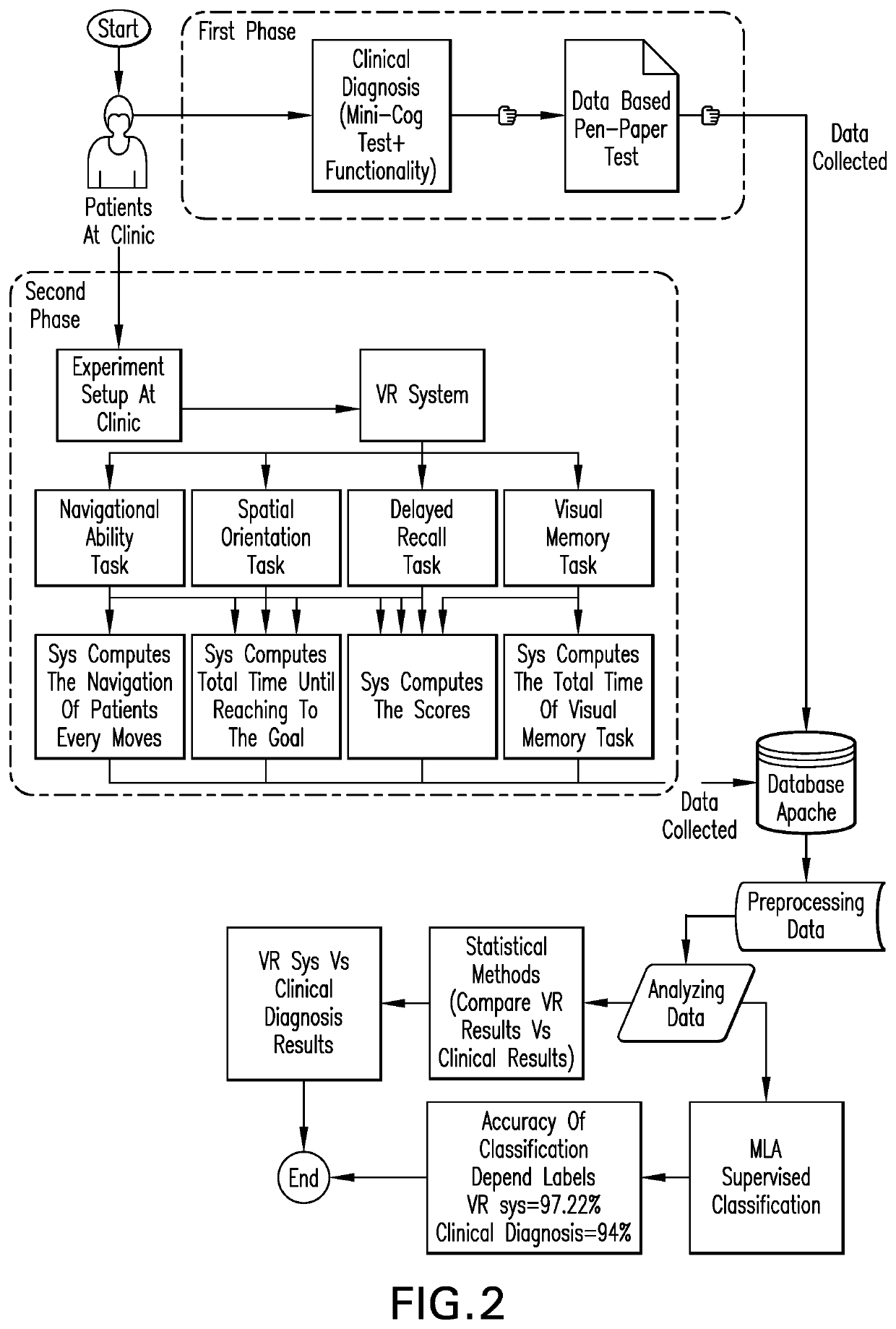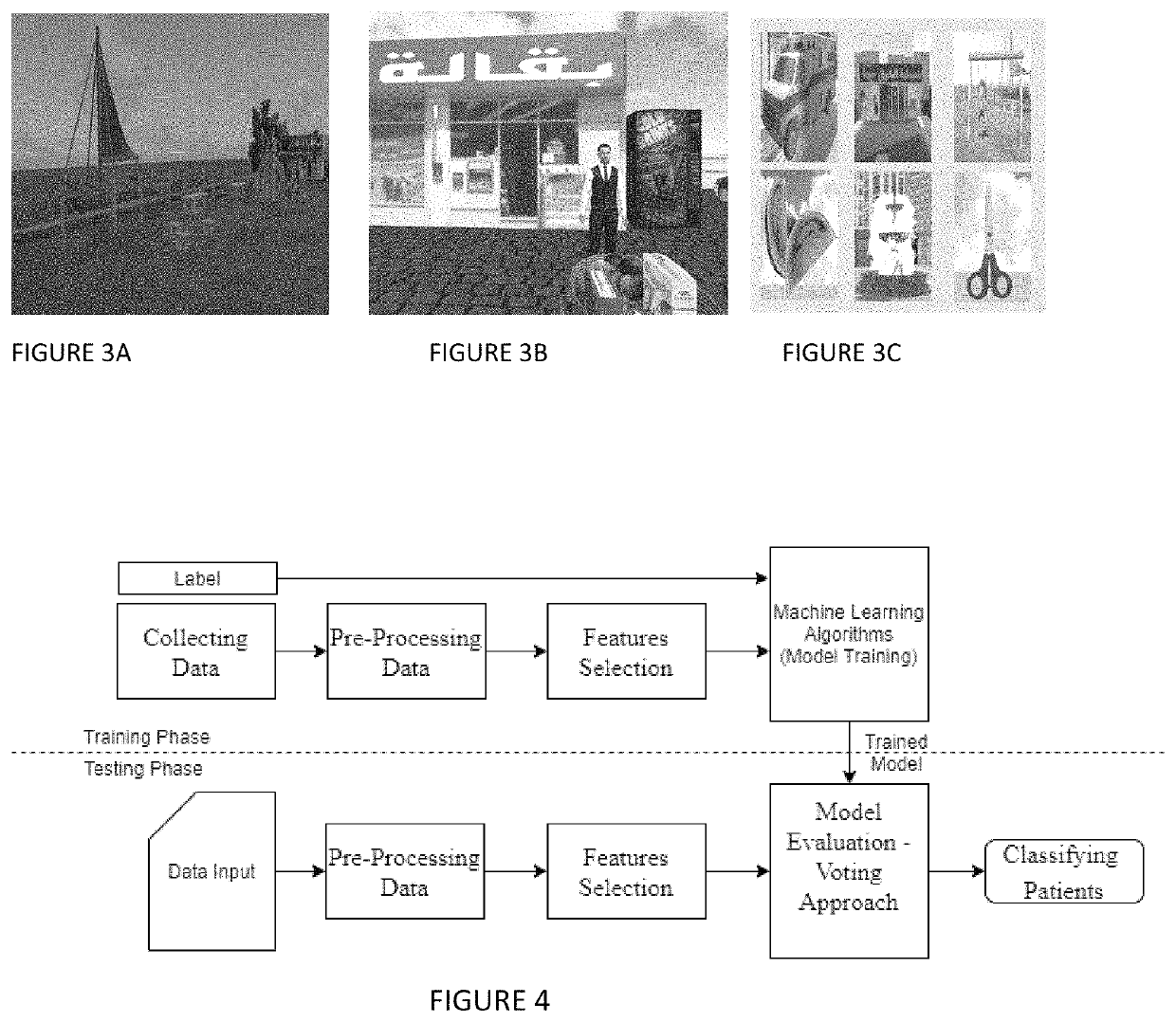Visuospatial disorders detection in dementia using a computer-generated environment based on voting approach of machine learning algorithms
a machine learning algorithm and dementia technology, applied in the field of dementia testing, can solve problems such as loss, impaired visuospatial skills, and impairment of receiving and recalling new information, and achieve the effect of increasing the accuracy of machine learning algorithms
- Summary
- Abstract
- Description
- Claims
- Application Information
AI Technical Summary
Benefits of technology
Problems solved by technology
Method used
Image
Examples
Embodiment Construction
[0056]In an embodiment of the invention, there is a system combining a model for patient information storage and retrieval, cognitive test-based VR System, and MLAs for classifying the patients' condition. Results obtained using this system are described below. The designed model contains different cognitive methods for measuring the impairment of patients' cognitive abilities and uses classification tools to determine whether the patient has cognitive impairment based on the data extracted from the system. This unique work combined three main parts, which are as follows: VR testing, multi-MLAs, and voting approach, and the combination makes this work unique. The performance of participants was compared with individuals diagnosis based on traditional neuropsychological tests used for the same cognitive domains: i) early and moderately severe dementia; ii) MCI; and iii) older adults who have normal cognitive. It was designed specifically for the Arabs in the Middle East, from both th...
PUM
 Login to View More
Login to View More Abstract
Description
Claims
Application Information
 Login to View More
Login to View More - R&D
- Intellectual Property
- Life Sciences
- Materials
- Tech Scout
- Unparalleled Data Quality
- Higher Quality Content
- 60% Fewer Hallucinations
Browse by: Latest US Patents, China's latest patents, Technical Efficacy Thesaurus, Application Domain, Technology Topic, Popular Technical Reports.
© 2025 PatSnap. All rights reserved.Legal|Privacy policy|Modern Slavery Act Transparency Statement|Sitemap|About US| Contact US: help@patsnap.com



